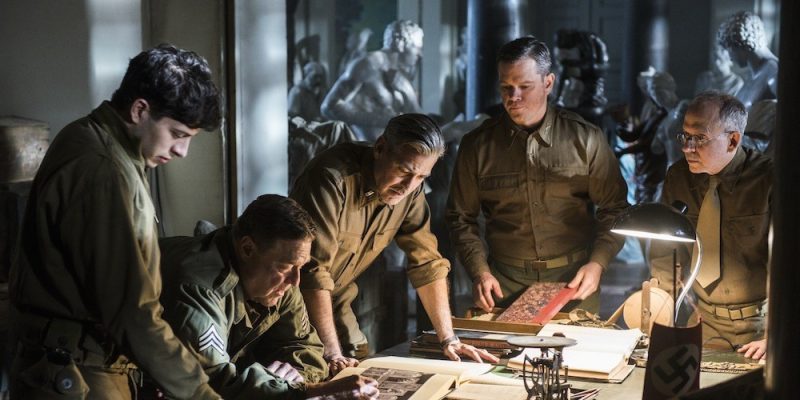In World War II, a small unit of art historians served on the front line with American troops. They weren’t there to fight but to protect precious European artworks from destruction.
The inspiration for the movie The Monuments Men, starring George Clooney and Matt Damon. The movie is loosely based on the non-fictional work of Robert M. Edsel, also titled The Monuments Men. The book recounts the activities of the Monuments Men during and directly after WWII and highlights the tremendous work done during the war to save Europe’s precious works of art. Over time, the Monuments Men were to save millions of sculptures, artefacts, books, buildings, monuments, ceramics, religious treasures and paintings.
By May of 1945, with Europe liberated, the extent of the Nazi plunder of the cultural treasures of Europe was being realised. The Monuments Men discovered artefacts of all types hidden inside salt mines, packed in crates, in private homes, inside abandoned buildings and even in castles. Over 1,500 repositories of looted goods were located in Germany alone.
When the U.S. troops withdrew from Germany, the works of art were turned over to the new Bavarian state government to be returned to their rightful owners. According to the Commission for Looted Art in Europe, an NGO based in London, many of the artworks were not returned at all.
For example, Picture of a Dutch Square is a 300-year-old copy of a painting by Jan van der Heyden. It was stolen from a Jewish collector in Vienna. Instead of being returned, it was sold to the daughter of Hitler’s photographer, Henriette Hoffman. She sold the painting a few months later for a substantial profit to the Xanten Cathedral, where it still hangs.
The Bavarian State Art Collection will not cooperate with investigators, and they will not allow historians or the families of Jewish collectors to access the archives. “All governmental agencies are required by law to make their documents accessible. And the State Art Collection is a government agency,” said Margit Knom-Marcon, the director of the Bavarian State Archive. “But we do not have a single document from the State Art Collection’s archive.”
The U.S. is not likely to keep quiet on the situation. Stuart Eizenstat, the special adviser on Holocaust issues to the U.S. Secretary of State, has asked Germany to do more to return these artworks to their proper owners. “It is important that Germany researches the history of looted art,” he has said previously.
